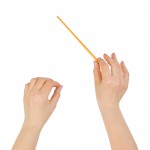How to Extend Your Most Musical Students
Comments Off on How to Extend Your Most Musical StudentsSomething I love about teaching music literacy, musicianship, aural and theory using the Kodály method is how easy it is to create extension ideas and activities suitable for the HUGE range of student abilities within our classes.
As any music teacher who has taught the first year of high school will know, our student’s abilities can range from absolutely none to brilliant performer, usually with every level in between covered as well. So how can we make sure they all learn from us???
I would suspect most of us teach to the lowest ability or beginners in our classes. This means everyone is learning (or revising) the same musical concepts at the same time. This also means there will be no gaps in the advanced student’s knowledge. The place for extension comes as soon as you begin practicing the new skill or concept. Advanced students need more advanced practice activities.
Here are a few of my favorites.
(There are HEAPS more extension ideas in the Musicianship & Aural Training for the Secondary School Level 1 and Level 2 Teacher Books – click here to see more about these great resources)
 Being teacher
Being teacher
There are many situations where an advanced student can play “teacher”.
For example when giving rhythmic or melodic dictations,students can create and clap, play or sing patterns (given very specific parameters) instead of the teacher. (Students may need to write it out first for checking).
Adding another level
This is most probably my favorite and the students love it too. We end up with challenges on top of challenges, usually until we collapse laughing at our failures.
Here is an example of adding levels with Rhythmic Sightreading activities:
Follow these instructions for all Rhythmic Sightreading exercises.
Once a rhythmic sightreading exercise has been learned, students can
- Clap and say the rhythmic sightreading exercise backwards while everyone else clasp and says it forwards
- Walk the beat while clapping and saying the rhythm names of the rhythmic sightreading exercise
- Tap the beat in one hand and the rhythm in the other while reading the rhythm names aloud and in their heads
- Conduct the beat in one hand and tap the rhythm in the other while reading the rhythm names aloud and in their heads
- Create another rhythm using the same parameters as the rhythmic sightreading exercise and perform both at the same time – one in each hand
- Create a rhythmic ostinato based on the rhythmic sightreading exercise and perform both at the same time – one in each hand
- Create your own extra level activity and perform for the class
 Adding another concept
Adding another concept
Advanced students will often ask “can I use other rhythms or notes as well as the ones we’ve learned here”?
My response is a careful “yes” with MANY provisos.
The first is that they must always complete the set task as it is set and show it to me BEFORE they add anything else. This ensures that I know they fully understand the concept being taught.
The second is that their additions must be carefully considered and explained to me before undertaking. For example, with a rhythmic composition they could
- add more complex rhythms,
- add a melody to their rhythm (using only the solfa taught so far) or
- add a second rhythmic part to create a duet etc.
Aural Tasks e.g. rhythmic and melodic transcription/ dictation exercises.
If we set the level of our aural transcription exercises so that the majority of our students can correctly notate it after a few hearings then our advanced students will get it immediately. Here are some activities to make these tasks more difficult.
- write the dictation from memory i.e. they do not write anything until they have it fully memorised.
- (practicing silently) tap the rhythmic dictation forwards in the right hand and backwards in the left hand simultaneously.
- compose a rhythm using the same time signature and number of bars as the rhythmic dictation. They then tap the rhythm of the rhythmic dictation in their right hand and the rhythm of the composition in their left.
- compose an accompaniment to the dictations by following rules they create. For example, have a whenever there is a Other students have to work out what the rules are just by listening and comparing.
Formal assessment tasks
As music is a highly academic subject (a fact that many teachers overlook) I believe it is ESSENTIAL that we set formal assessment tasks (such as assignments and exams) so our students (and their parents etc) appreciate the value of their work.
Set assignments are a great opportunities for advanced students to show what they are capable of.
For example, once a term my students receive a composition assignment to complete. At the end of the first term of the first year of high school it is as simple as composing, notating and performing a 16 bar rhythm using the following parametres:
- The time signature is to be 4 metre and you must use the rhythmic elements of crotchets, quavers and crotchet rests.
- The composition is to be performed by you at a later date, from memory.
- Your composition must have a title and be written by hand on the staff.
To allow the advanced students to show more of their abilities they are offered the following optional extension tasks:
Option 1.
If you choose this option you must do both parts A and B.
Part A. You may use any rhythmic element you know.
Part B. Write a short paragraph explaining why you wrote what you did. Consider compositional devices such as pattern, form, repetition etc. You may receive a maximum of 4 bonus marks for this option – 2 marks for each part.
Option 2.
Add a simple melody (writing the solfa beneath the rhythm) using only do re mi. Notate this onto the staff in an F and G do.
You may receive a maximum of 4 bonus marks for this option – 2 marks for the melody in solfa and 1 mark for the staff notation in each do.
Technology Option.
Input finished composition onto the staff in Sibelius.
Using the IWB have class perform some of the compositions and discuss what aspects of the composition makes it work well.
So these are just a few of the ideas that keep ALL my students engaged in my music classes. I would love to hear how you keep your advanced students (or perhaps your slower students) challenged in your music lessons. Please share your ideas in the comments below.


Comments are closed